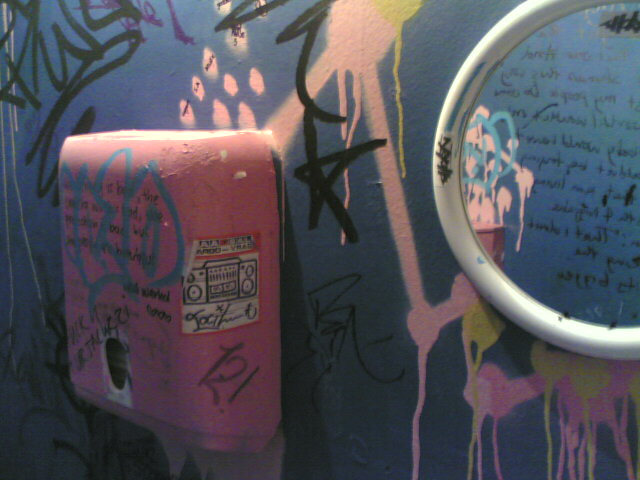
Men are like / pantyhose / they either / run / cling / or don’t fit right / in the crotch -anonymous toilet graffiti
Before the Internet, memes had to propagate through physical means like chain letters (laboriously hand copied), billboards, and graffiti. Bathroom graffiti in particular allows researchers to speculate about how the scribblings express gender. Nick Haslam summarizes the various approaches to interpreting toilet graffiti:
Psychoanalytic writers proposed that graffiti writing was a form of ‘phallic expression’ or that men pursued it out of an unconscious envy of women’s capacity for childbirth. Semioticians argued that men’s toilet graffiti signify and express political dominance, whereas women’s respond to their subordination. Social identity theorists proposed that gender differences in latrinalia reflect the salience of gender in segregated public bathrooms: rather than merely revealing their real, underlying differences, women and men polarize their behaviour in these gender-marked settings so as to exaggerate their femaleness or maleness.
Similarly gendered forums are typically associated with “gamer culture,” but these spaces are gradually becoming more diverse. But do gamers feel a need to exaggerate their femaleness or maleness, given the gendered history of video game development and discussion? Recent discussions and comments about white male privilege and rape culture suggest that some males react to the assertion that some videogames are a gendered space by adopting an even more aggressive masculine indifference. That said, many individuals of both genders have approached such subjects with sensitivity.
[via The Psychologist] [img]